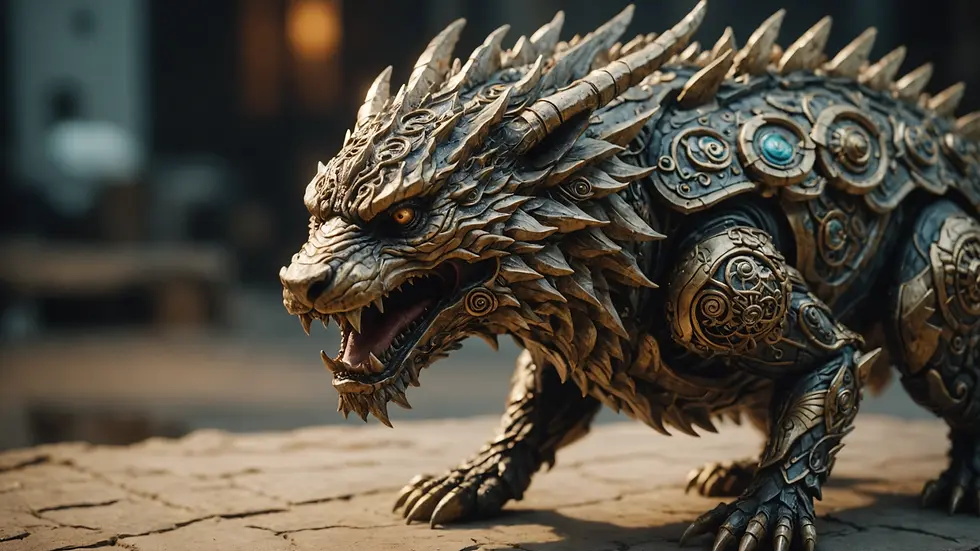Unveiling the Secrets of Mastering ZBrush: A Professional's Step-by-Step Guide to Sculpting Success
- Neoscape Dimensions
- Mar 1
- 4 min read
ZBrush has transformed the way artists create digital sculptures, blending imagination with cutting-edge technology. Whether you are just starting or are an experienced artist looking to enhance your skills, mastering ZBrush is crucial for producing impressive three-dimensional art. This guide presents the essential tools and techniques to help you on your sculpting journey.
Getting to Know ZBrush Sculpting Tools and Interface
ZBrush is packed with powerful tools tailored for various aspects of digital sculpting. When you launch ZBrush, you encounter a distinct interface filled with numerous options. Understanding these tools is the first step toward mastering the software.
Navigating the Interface
ZBrush’s workspace can appear complex at first. Key components include the Canvas, Palette, Tool Palette, and Subtool list. The Canvas is your main working area for sculpting, while the Palette houses different tools at your disposal.
Each tool serves a specific purpose. The Brush Palette is vital for sculpting; it lets you choose brushes to manipulate your model’s surface. Among the most popular brushes are:
Standard Brush: Great for initial shaping and refining surfaces.
Clay Buildup Brush: Perfect for adding mass and volume to your model.
Move Brush: Allows you to push and pull large areas quickly to define the form.
Intuitive Navigation
Navigating ZBrush is straightforward with a tablet or mouse. You can easily rotate or zoom in on your model, enabling a clear view of your work as you sculpt. This ability to see your creation from various angles is key for capturing dynamic shapes and proportions.
Your Step-by-Step Guide to Sculpting a Character or Object in ZBrush
Starting your sculpting journey can feel daunting, but breaking it down into manageable steps can simplify the process. Below is a detailed guide to sculpting a character using ZBrush.
Step 1: Setting Up Your Base Mesh
Start with a base mesh. You can create one from scratch or import one from external resources. This mesh is essential since it serves as the foundation for your character.
To create a new Sphere, navigate to Tool > Polymesh3D > Select Sphere.
After creating your base mesh, subdivide it for enhanced detailing. Go to the Geometry tab and click Divide.
Step 2: Blocking Out Shapes
With your subdivided mesh, begin defining your character's basic forms using the Move and Standard brushes. Concentrate on getting the proportions and pose right.
Switch to the Move Brush to pull and push areas that need adjustment.
Use the Standard Brush to refine volume and outline basic muscle shapes. For example, when sculpting an arm, focus on the deltoid and biceps regions.
Step 3: Adding Finer Details
Once satisfied with the general form, it's time to refine the details. ZBrush lets you layer in various textures and details through its array of brushes.
Choose the Clay Buildup Brush to add mass to areas like the shoulders or thighs, improving muscle definition.
Use the Dam Standard Brush to carve out sharper lines and details in your sculpture, such as defining facial features and muscle striations.

Step 4: Refining Your Sculpture
After the initial detailing, step back and evaluate your work. Utilize the Smooth Brush to soften any harsh or unnatural areas.
Identify sections that require more attention. Revisit them with your detailing brushes.
Double-check proportions against your original concept for accurate representation.
Step 5: Creating Textures and Surface Details
Textures are essential for achieving realism. You can apply them in various ways within ZBrush.
Explore Alpha Maps to craft intricate surface textures. You can find an abundance of pre-made alphas online or create your own for unique effects.
To apply an Alpha, access the Alpha tab, select your desired texture, and use the Drag Rectangle stroke to imprint that texture onto your model.

Step 6: Polygroups and UV Mapping
Polygroups are useful for organizing complex models. Assign different colors to sections of your mesh for easy separation.
Use the Polygroups section in the Tool menu to color different parts.
For UV mapping, the UV Master plugin is highly beneficial, simplifying the creation of UV maps for texturing.
Strategies for Realistic Textures and Details in Your Sculptures
To bring authenticity to your sculptures, consider these practical tips and techniques:
Studying Human Anatomy
Understanding human anatomy is essential for sculptors creating characters. Familiarize yourself with muscle groups and skeletal structures to craft believable forms.
Utilize anatomy reference books or reputable online resources for guidance.
Practice sculpting using live models or reference images to master proportions accurately.
Experimenting with Lighting and Shadows
Lighting is critical in ZBrush for accurately visualizing your sculptures.
Try different lighting setups found in the Light menu to see how it affects your mesh.
Fine-tune shadow settings to add depth, enhancing the overall look of your sculpture.
Utilizing Material Properties
ZBrush features a variety of materials that enhance depth and realism in your work.
Use materials like Skin Shade for character models to achieve a lifelike appearance.
Adjust Material settings to control sheen and specularity, heightening the realism of your texture.
Wrapping Up Your ZBrush Journey
Mastering ZBrush is a rewarding journey filled with creativity and learning. By familiarizing yourself with the interface, understanding core tools, and applying effective sculpting techniques, you are well on your way to sculpting success.
Remember to practice consistently, seek feedback, and embrace experimentation within the software. With dedication and persistence, you will unlock ZBrush's vast potential, allowing you to turn your creative visions into reality.

Explore the exciting world of ZBrush, and watch your digital sculpting skills take flight!



Comments